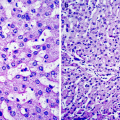and LI Ning2
(1)
Radiology Department, Capital Medical University Beijing You’an Hospital, Beijing, China, People’s Republic
(2)
Capital Medical University Beijing You’an Hospital, Beijing, China, People’s Republic
Abstract
Influenza A(H1N1) belongs to the school of warm diseases and can be categorized into violence qi, caused by external attack of the six pathogenic evils. The lungs governing defensive qi have correspondence to skin and hair. The external pathogenic evils firstly attack the lungs to cause the stagnant defensive qi. The resulted defensive-exterior symptoms are actually excessive exterior heat syndrome. For cases with vital qi insufficiency, the pathogenic evils fight against defensive qi to cause visceral dysfunctions. The pathogenic evils then transform into heat for further attacks, which may impair nutrient qi to cause the syndrome of dual blaze of qi nutrient aspects. In the advanced stage, the subsided pathogenic evils and the deficient vital qi impair both qi and yin.
15.1 Etiology and Pathogenesis of Influenza A (H1N1) by TCM
Influenza A (H1N1) belongs to the school of warm diseases and can be categorized into violence qi, caused by external attack of the six pathogenic evils. The lungs governing defensive qi have correspondence to skin and hair. The external pathogenic evils firstly attack the lungs to cause the stagnant defensive qi. The resulted defensive-exterior symptoms are actually excessive exterior heat syndrome. For cases with vital qi insufficiency, the pathogenic evils fight against defensive qi to cause visceral dysfunctions. The pathogenic evils then transform into heat for further attacks, which may impair nutrient qi to cause the syndrome of dual blaze of qi nutrient aspects. In the advanced stage, the subsided pathogenic evils and the deficient vital qi impair both qi and yin.
15.2 Syndromes Differentiation by TCM
15.2.1 Features of Syndromes
Influenza A (H1N1) usually shows flu-like symptoms, including fever, chills, cough, sore throat, expectoration, general soreness, headache and fatigue. In some cases, diarrhea and/or vomiting occurs. About 10 % cases have no fever and the conditions of some patients may develop rapidly with sudden high fever over 39 °C. Syndromes of pericardial invasion occur, even with yin exhaustion or yang exhaustion, followed by death from syncope and collapse.
15.2.1.1 Syndrome of Wind Heat Invading the Defense
Syndrome of wind heat invading the defense has symptoms of fever and chills or no fever, inflamed throat or throat upset, muscles soreness and fatigue, mild cough, slight red tongue, thin tongue coating or thin greasy tongue coating, and floating pulse.
15.2.1.2 Syndrome of Heat Evil Invading the Lungs
Symptoms include fever, frequent and violent cough, thick yellowish or bloody phlegm, sore throat, thirst, red eyes, nausea, vomiting, abdominal pain, diarrhea, red or purple tongue, yellow or greasy tongue coating and slippery pulse.
15.2.1.3 Syndromes of Dual Blaze of Qi Nutrient Aspects
Symptoms include high fever, cough, shortness of breath, chest distress, or chest distending pain, irritation, even coma and delirium, thirst, red urine, dry stool, red or purple tongue, yellow tongue coating and thready pulse.
15.2.1.4 Syndrome of Right Qi Deficiency and Evils Subsiding
Symptoms include fatigue, weakness, dry mouth, excessive sweating, poor appetite, red tongue, thin tongue coating, thready and weak pulse.
15.2.2 Key Points for Differentiation
Influenza A (H1N1) develops from pathogenic heat evil invading the defense, which belongs to the syndrome of exterior heat and excess syndrome. Then, the heat evil invades the lungs to impair nutrient qi, followed by pathogenic evils subsiding and the vital qi deficient which consumes and impairs yin.
15.3 Medicinals and Formula in TCM
15.3.1 Formulae for Prevention in TCM
Ingredients
太子参 | tài zĭ shēn | 10 g | Radix Pseudostellariae |
苏叶 | sū yè | 6 g | Perilla Frutescens |
黄芩 | huáng qín | 10 g | Radix Scutellariae |
牛蒡子 | níu bàng zĭ | 10 g | Fructus Arctii |
or | |||
生黄芪 | huáng qí | 15 g | Radix Astragali |
白术 | bái zhú | 10 g | Rhizoma Atractylodis Macrocephalae |
防风 | fáng fēng | 6 g | Radix Sapshnikoviae |
The above two formulae is adapted to patients who have weak constitution and are susceptible to exterior invasions. The decoction should be prepared by boiling with water and oral intake for two times daily, one in morning and the other in evening. A total of 3–5 doses is appropriate for one therapeutic course. And the doses should be considerably decreased for children and the seniors.
Ingredients
大青叶 | dà qīng yè | 5 g | Folium Isatidis |
紫草 | zĭ căo | 5 g | Radix Lithospermi |
生甘草 | shēn gān cāo | 3 g | Radix Glycyrrhizae |
The above formula is adapted to patients with reddish complexion, dry mouth, throat or nose, in favor of cool, slightly dry stool, yellowish urine. The decoction should be prepared by boiling with water, with one dose for each day and oral intake twice a day, one in morning and the other in evening. A total of 3–5 doses is recommended for one therapeutic course. And doses should be considerably reduced for children and the seniors.
Ingredients
桑叶 | sāng yè | 10 g | Folium Mori |
金银花 | jīn yīn huā | 10 g | Flos Lonicerae |
白茅根 | bái máo gēn | 15 g | Rhizoma Imperatae |
The above formula is adapted to patients with sometimes dry nose and mouth, reddish and yellowish urination. The decoction should be prepared with one dose daily by boiling with water and orally intaken twice daily, one in morning and the other in evening. A total of 3–5 doses is appropriate for one therapeutic course. The dose should be considerably reduced for children and the seniors.
Ingredients
苏叶
Stay updated, free articles. Join our Telegram channel
Full access? Get Clinical Tree
 Get Clinical Tree app for offline access
Get Clinical Tree app for offline access

|

